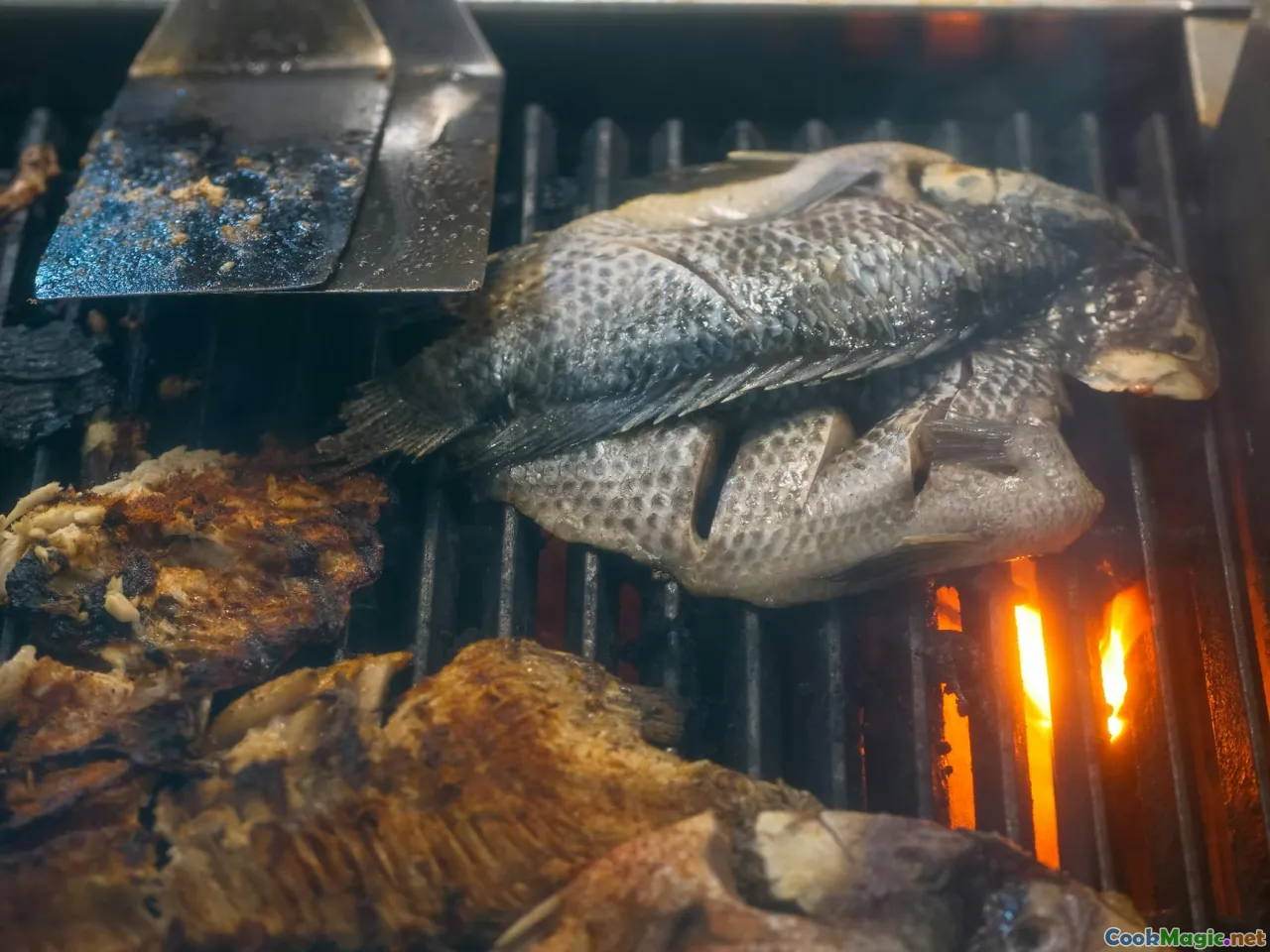The Role of Smoked Fish in Congolese Cooking
7 min read Explore how smoked fish shapes Congolese culinary traditions, flavor profiles, and cultural significance through vivid stories and sensory details. May 22, 2025 15:00
The Role of Smoked Fish in Congolese Cooking
Introduction: A Flavorful Tradition Rooted in History
Imagine walking through a vibrant market in Kinshasa or Brazzaville, where the air is thick with the aroma of smoky goodness, mingling with the chatter of vendors and the scent of tropical fruits. Amidst this lively tapestry, one ingredient stands out for its deep cultural roots and undeniable flavor—smoked fish. This humble yet vital component of Congolese cuisine isn’t merely a method of preservation; it’s a culinary keystone that embodies history, community, and the very soul of the rivers and lakes that define the Congo region.
The Cultural Significance of Smoked Fish in the Congo
A Tradition Shaped by Geography and Climate
The Congo Basin, with its expansive rivers, lakes, and dense forests, provides an abundant source of freshwater fish—essential for the diet and economy of local communities. Historically, fish was abundant and accessible, but preserving it for leaner seasons or trade required ingenuity. Smoking fish emerged as a practical solution, transforming fresh catch into a durable, flavorful staple.
This method of preservation evolved into an art form, intertwined with cultural practices and social rituals. Across villages along the Congo River and its tributaries, smoked fish is more than sustenance; it’s a social currency, a gift during ceremonies, and a symbol of resilience.
An Emotional and Social Anchor
Sharing smoked fish during communal meals fosters bonds and reinforces social hierarchies. It’s often the centerpiece of family gatherings, celebrations, and rituals. The act of smoking fish, passed down through generations, embodies collective memory and identity.
The Process of Smoking Fish: From Catch to Culinary Treasure
Selection and Preparation
The journey begins with freshly caught fish—tilapia, catfish, or Nile perch—each chosen for their size, freshness, and flavor potential. Fish are cleaned meticulously, with scales and entrails removed, then sometimes marinated using local spices like ginger, garlic, or chili to infuse additional layers of flavor.
The Smoking Technique
Traditional smoking involves hanging fish over a smoky fire made from hardwoods like mango, acacia, or cocoa husks. The process can take several hours, during which the fish absorb the smoky aroma, develop a firm texture, and gain a golden-brown hue. The temperature and duration are carefully monitored to ensure safety and flavor.
The resulting smoked fish boasts a rich, complex taste—deeply smoky, slightly salty, with a tender yet firm texture that holds up well in various dishes.
Culinary Uses of Smoked Fish in Congolese Cuisine
Flavor Foundation and Ingredient Enhancement
Smoked fish is versatile, used as a primary ingredient or flavor enhancer. Its robust aroma infuses stews, soups, and sauces, adding depth and a distinctive smoky undertone.
Popular Congolese Dishes Featuring Smoked Fish
-
Pondu (Cassava Leaf Stew) with Smoked Fish: A beloved dish where tender cassava leaves are simmered with smoked fish, palm oil, and spices, resulting in a hearty, aromatic stew that’s both comforting and celebratory.
-
Moambe Chicken with Smoked Fish: Combining the richness of palm nut sauce with chunks of smoked fish creates a layered flavor profile, showcasing the harmony between land and river ingredients.
-
Fried or Grilled Smoked Fish: Often served as a snack or main course, simply seasoned and cooked over open flames, allowing the smoky aroma to shine.
Preservation and Extended Use
Smoked fish can be stored for weeks, making it an invaluable resource for communities with limited access to refrigeration. It also features in portable meals and outdoor gatherings, embodying a sense of tradition and resourcefulness.
Personal Reflections and Sensory Experiences
Having traveled along the Congo River and sampled its cuisine, I remember the first bite of smoked fish—its smoky aroma awakening my senses, the tender flesh melting in my mouth, infused with a subtle hint of spice and salt. The experience wasn’t just about taste; it was about connecting with a community’s history, resilience, and love for their environment.
The texture is a dance between firmness and succulence, while the flavor profile is complex—earthy, smoky, slightly salty, with a whisper of sweetness from the fish itself. The visual appeal, with its glossy, golden-brown exterior, invites anticipation, promising a profound taste experience.
The Future of Smoked Fish in Congolese Cuisine
As global interest in traditional and sustainable food practices grows, smoked fish from Congo continues to gain recognition. New generations are innovating, blending age-old techniques with modern flavors, ensuring this culinary treasure endures.
Furthermore, efforts to promote sustainable fishing and responsible smoking methods aim to protect the environment while preserving this cultural gem.
Conclusion: A Symbol of Heritage and Flavor
Smoked fish in Congolese cooking is more than an ingredient; it’s a narrative of survival, community, and identity. Its rich aroma and complex flavors encapsulate the essence of the Congo—vibrant, resilient, and deeply rooted in nature’s bounty. As you savor dishes that feature smoked fish, remember that you’re tasting centuries of tradition, a testament to the ingenuity and spirit of the Congolese people.
Whether enjoyed in a humble stew or a festive feast, smoked fish remains a cornerstone of Congolese culinary heritage—a delicious reminder of the river’s gift and the community’s enduring bond with its land and waters.









